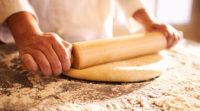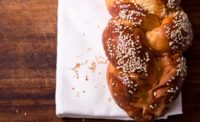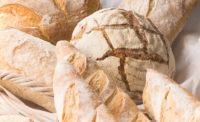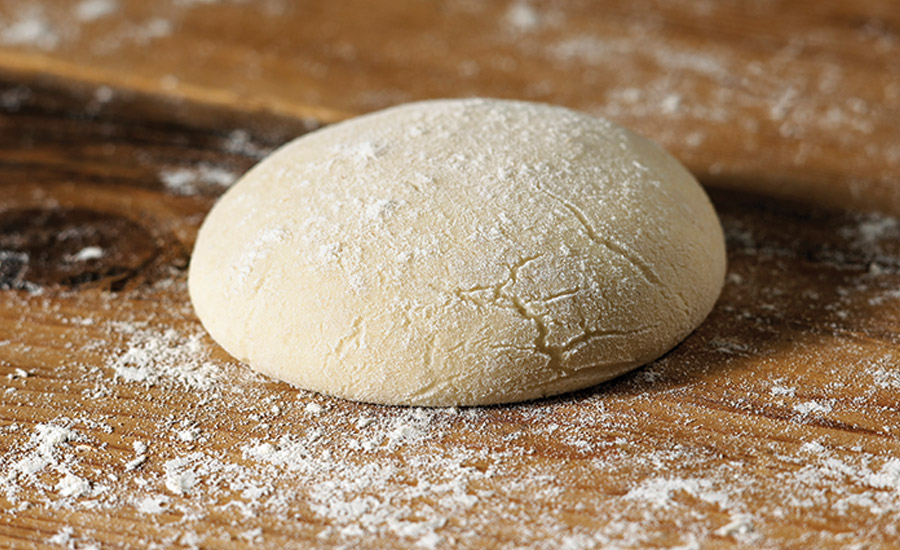Controlling artisan bakery dough fermentation




In May’s column, we discussed the process of fermentation. Bakers put that wheel into motion once they combine water, flour and yeast—either commercial or wild—in a bowl and start to mix. However, there are numerous controls to initiate controlled fermentation as opposed to a process that under- or over-ferments yeasted products.
An understanding and manipulation of fermentation variables makes it more likely you will pull a well-caramelized, full-volume, tasty loaf out of the oven that adheres to your organization’s production schedule. Many of these are simple techniques and will help you achieve consistency and quality.
Final dough temperature. Dough temperature is one of the most-important, and easiest, variables to control. Yeast-leavened products have an optimum fermentation temperature of 75° to 78°F (24° to 25.5°C) at the end of mixing. This is referred to as desired dough temperature (DDT) and is usually noted in the formula. However, if it is not specified, shoot for 76°F (24.4°C) and adjust as necessary for future bakes.
The way to achieve the DDT is by adjusting the temperature of the water (or other liquid) that goes into the dough. We have to take into account the fixed temperatures of the flour and the room, as well as heat generated via the friction factor (the amount of heat that gets put into the dough through the process of mixing).
When dough temperature is low, fermentation is inhibited, the process slows down and the baked loaf is dense with low volume and flavor notes that lack the desired complexity that comes with thorough proper fermentation. When the dough temperature is too high, fermentation is too vigorous, too many residual sugars are consumed and the dough can become gassy and hard to handle. Off flavors and pale crust color may be the result.
You might have heard of a DDT concept called the “240 factor” for a straight dough, a formula that does not include a preferment. There is also a version that includes the temperature of a preferment such as a sourdough starter, poolish, biga, etc. The preferment version is illustrated below. If you are making a straight dough, multiply the DDT by three and subtract the temperatures of the flour, water and friction factor. The calculation is simple arithmetic, but is the first step on the journey to a beautiful and well-fermented loaf.
Multiply the desired dough temperature by four, then subtract the flour temperature, preferment temperature, room temperature and friction factor. The result is the water temperature you should use. Or:
Water temperature = (4X desired dough temperature) - (flour temperature + room temperature + preferment temperature + friction factor)
The friction factor will vary depending on hydration of the dough and whether you mix by hand. Most mixers add approximately 30°F (17°C) to a properly mixed hearth bread, while hand mixing might add about 10°F. Other variables can impact friction factor. A very wet dough (above 80 percent hydration) made with white flour might not generate any friction heat, while a drier dough in a mixer will create more friction. Also, a fast mixer will add more heat to the dough than a slower mixer, given the same mixing time.
Don’t know the friction factor for your mixing method? Take the temperature of the dough when it first becomes homogeneous during the final dough mixing process and again when kneading is complete. Subtract the first value from the second; the difference in those quantities is the friction factor.
Primary and secondary fermentation temperatures. The environment in which the dough is held during primary and secondary temperature also gives the baker an option to control fermentation. Dough can be left at ambient temperatures for its entire life. However, dough can also be chilled when it is still in bulk or once it has been shaped. This process, called retarding, slows down the rate of fermentation. Organic acid accumulation (see May’s column for more information about this) leads to a more-complex flavor, but also one that tends to be more sour due to the presence of acetic acid. In addition to creating deep flavor, retarding is a technique that spreads production over several days, giving flexibility to the production schedule.
Ratio of yeast and/or prefermented flour. Artisan bread baking relies on long, slow fermentation to create Old World hearth bread and viennoiserie that showcases rich hints of fermentation which complement, but don’t overpower, the ingredients that accompany enriched doughs.
Proper yeast levels are about 1 percent fresh yeast or 0.3 percent dry yeast. There are some variations based on product, but these levels yield controlled fermentation and an admirable product compared to breads with excessive yeast levels.
The ratio of prefermented flour mimics the yeast ratio. More of the overall flour in the preferment means the dough will be move more quickly than one that is formulated with a lower percentage of prefermented flour.
Hydration. Wet doughs and preferments ferment more quickly than dry doughs and preferments. Simple as can be in the world of fermentation!
One of the intriguing aspects of baking artisan bread is manipulating these variables, not all of which are included here. These techniques make nurturing fermented products an exercise in following general rules while combining those rules to bake the products you want and in a feasible time schedule for your bakery. Control fermentation, and control your production!
Looking for a reprint of this article?
From high-res PDFs to custom plaques, order your copy today!







